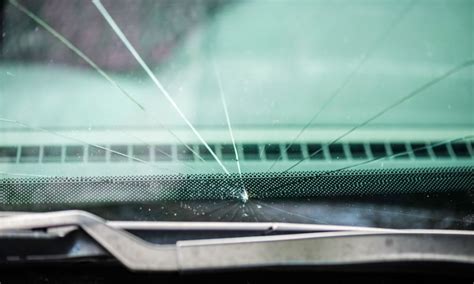Understanding the Mechanics of Windshield Cracking
Windshield cracks. A frustratingly common occurrence, they can range from barely noticeable spiderwebs to significant fractures compromising visibility and safety. But what actually causes these cracks? Understanding the mechanics behind windshield damage is crucial for prevention and repair. This article delves into the physics and material science behind windshield cracking, answering common questions along the way.
What Causes Windshield Cracks?
The most common culprit is impact. A small rock chip from a passing vehicle, a rogue pebble kicked up from the road, or even a stray piece of debris can initiate a crack. However, the severity of the resulting crack depends on several factors:
- Impact Energy: A high-velocity impact delivers more energy, leading to larger and more complex cracks.
- Point of Impact: Cracks often radiate outwards from the initial impact point, but the direction and pattern can vary depending on the location and angle of impact.
- Windshield Material: Modern windshields are laminated, consisting of two layers of glass bonded to a layer of polyvinyl butyral (PVB) interlayer. This interlayer is crucial for holding the glass together, preventing shattering, and absorbing impact energy. However, even this robust material has its limits.
- Existing Stress: Pre-existing stress in the windshield, perhaps from minor chips or previous impacts, can significantly influence how a new impact propagates a crack. A small chip might become a large crack under additional stress.
- Temperature Fluctuations: Extreme temperature changes can cause stress within the glass itself, potentially leading to the expansion or contraction of pre-existing cracks.
How Does a Crack Propagate?
Once an impact occurs, a crack begins to propagate due to the release of stored elastic energy within the glass. The crack follows paths of least resistance, often branching out in a characteristic spiderweb pattern. The PVB interlayer helps to slow this propagation, preventing complete shattering and holding the fragments together. However, if the impact is severe enough, the interlayer can be compromised, leading to more extensive cracking.
What are the Different Types of Windshield Cracks?
Windshield cracks can be categorized in several ways:
- Star Cracks: These originate from a central point of impact, radiating outwards like spokes on a wheel.
- Bullseye Cracks: These form a concentric circle around the point of impact.
- Combination Cracks: Many cracks combine elements of star and bullseye patterns.
- Stress Cracks: These can appear without a clear point of impact and are often caused by underlying stress within the glass.
- Long Cracks: These are typically linear and can extend across a significant portion of the windshield.
Can a Small Chip Turn into a Large Crack?
Yes, absolutely. A small chip represents a point of weakness in the windshield. Over time, exposure to temperature fluctuations, vibrations, and further impacts can cause this chip to expand and propagate into a larger, more serious crack. It's crucial to repair small chips promptly to prevent further damage.
How Can I Prevent Windshield Cracks?
While you can't entirely prevent the occasional rock chip, you can minimize the risk:
- Maintain a Safe Following Distance: This reduces the likelihood of being hit by debris kicked up by vehicles in front.
- Drive Carefully on Rough Roads: Reduce speed and avoid potholes and other obstacles that could throw up debris.
- Regularly Inspect Your Windshield: Catch small chips early before they become larger cracks.
Is it Safe to Drive with a Cracked Windshield?
Driving with a severely cracked windshield is unsafe and, in many jurisdictions, illegal. A large crack can significantly impair your visibility, compromising your ability to safely operate a vehicle. Furthermore, a cracked windshield can compromise the structural integrity of your vehicle.
When Should I Replace My Windshield?
If the crack impairs your vision, compromises the structural integrity of the windshield, or is located in a critical area (like the driver's line of sight), it should be replaced immediately. Consult with a professional auto glass repair technician for guidance.
This detailed exploration of windshield cracking mechanics provides a comprehensive understanding of the issue, from initial impact to crack propagation and prevention. Remember, early detection and repair are key to maintaining a safe driving environment.

